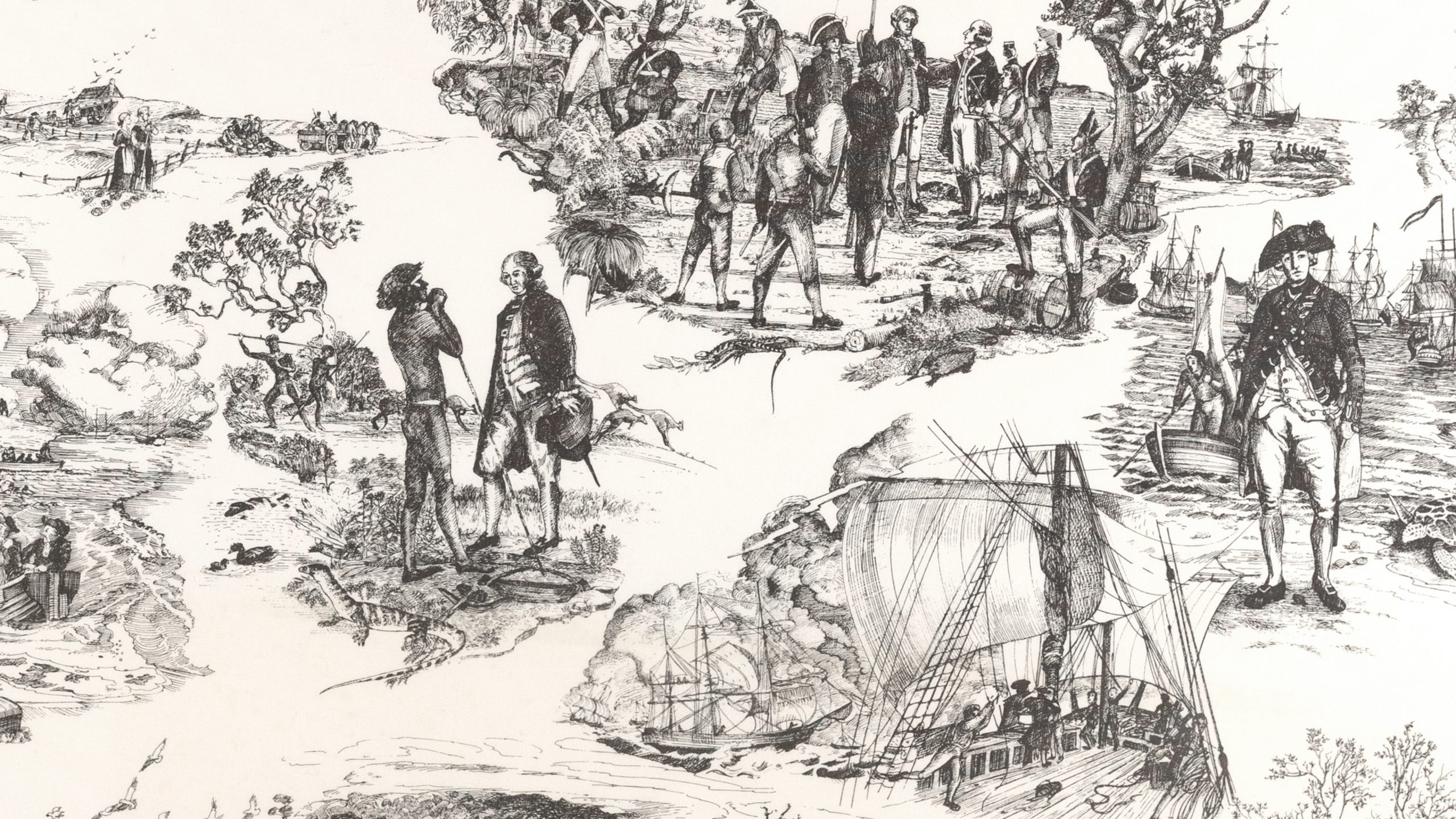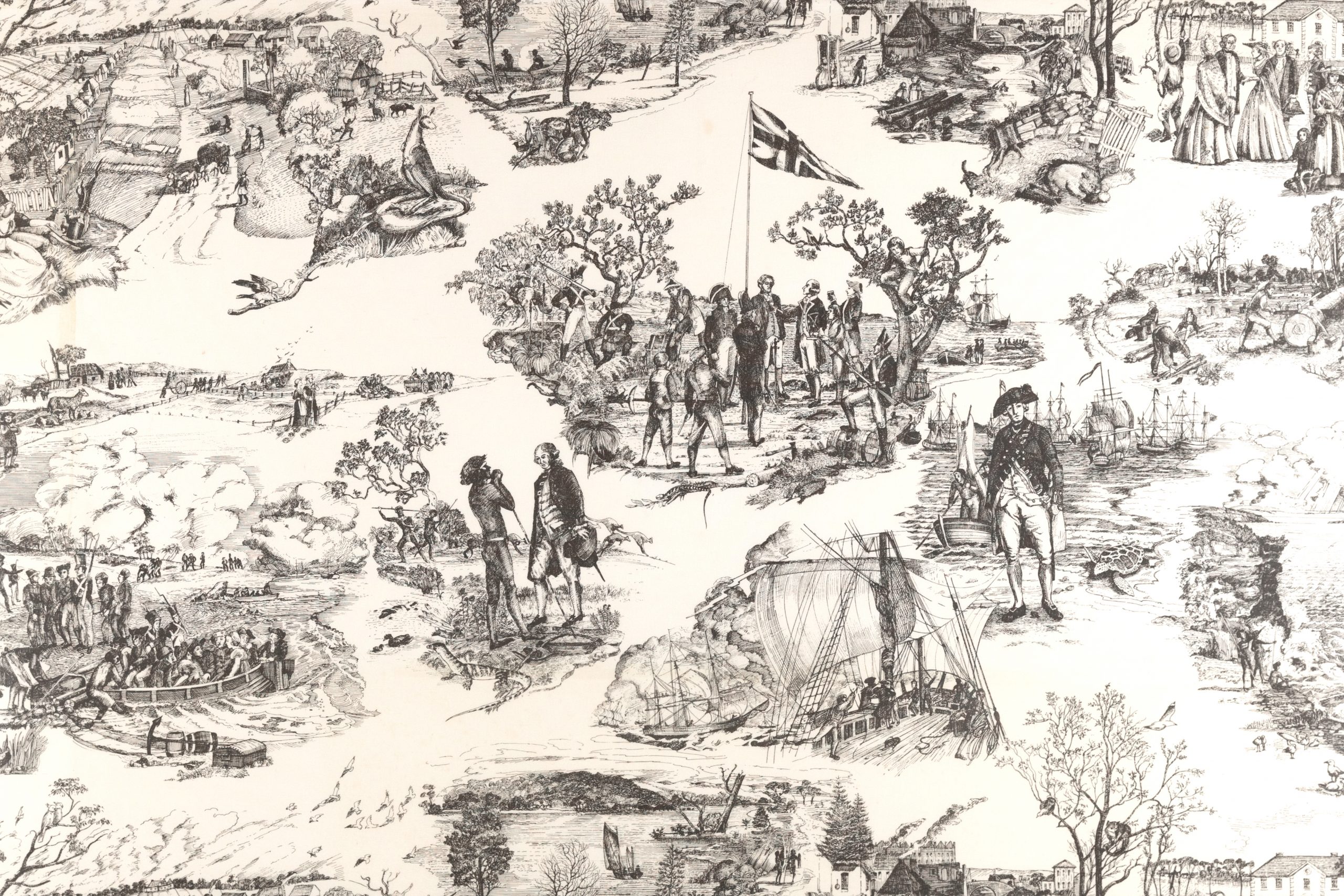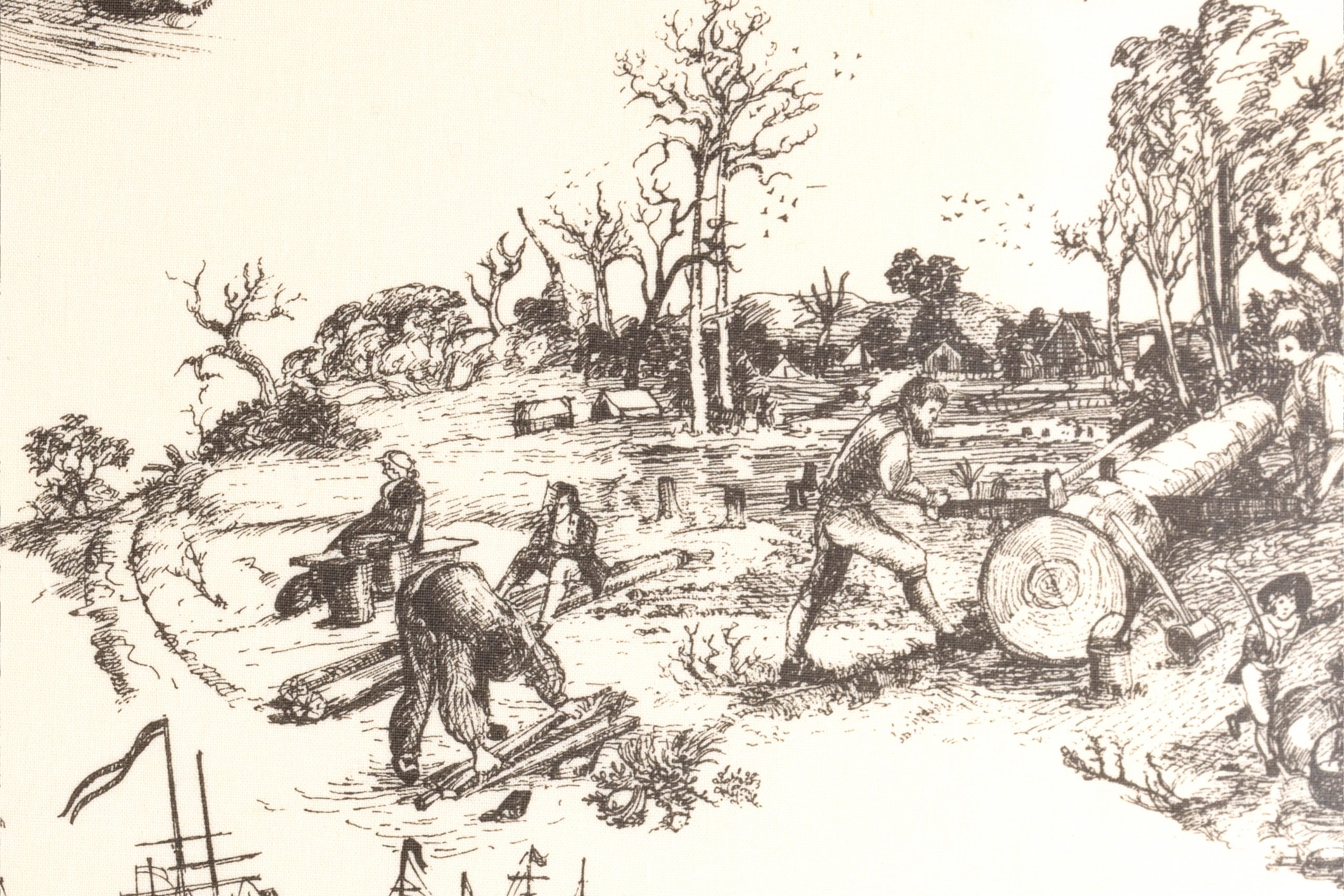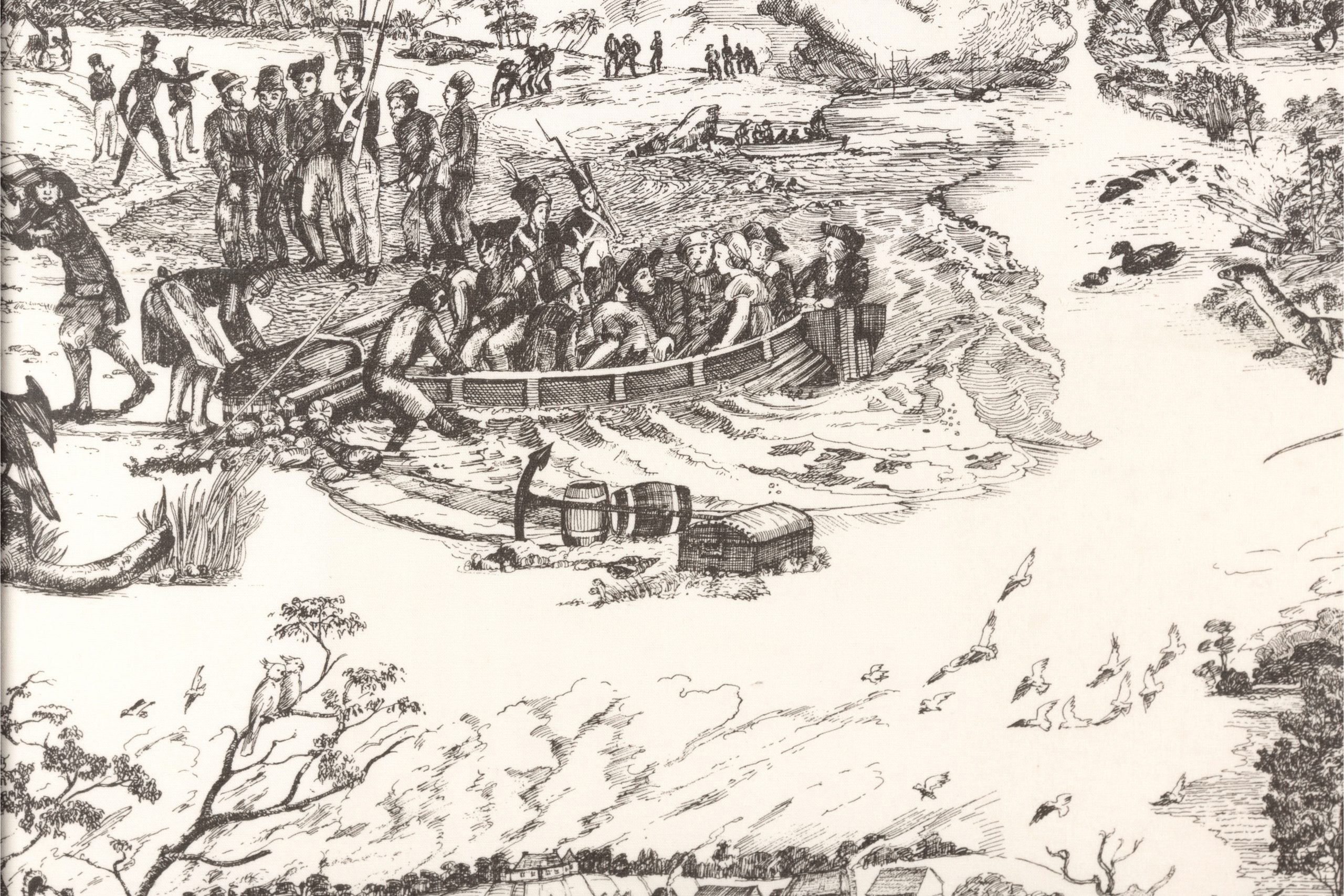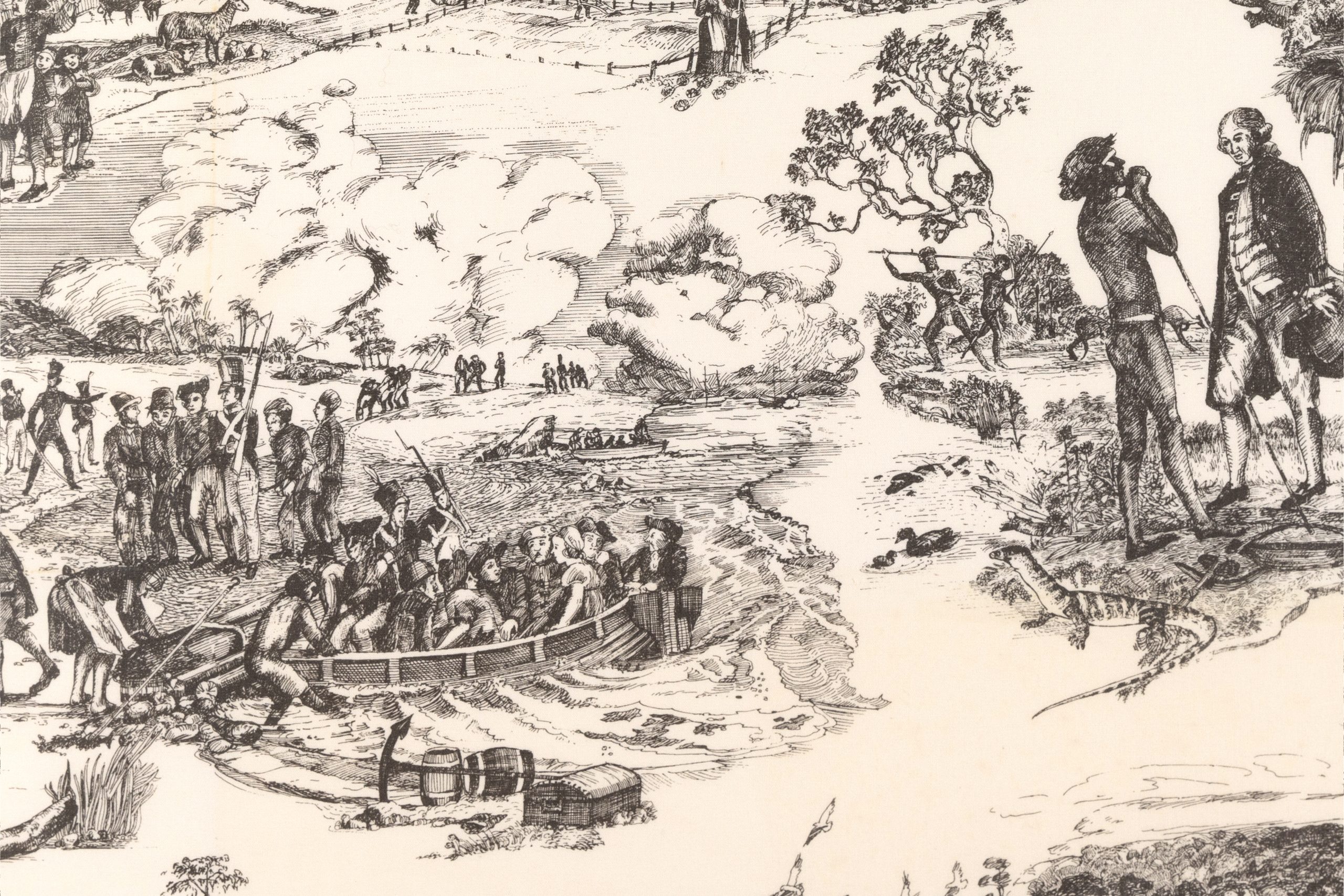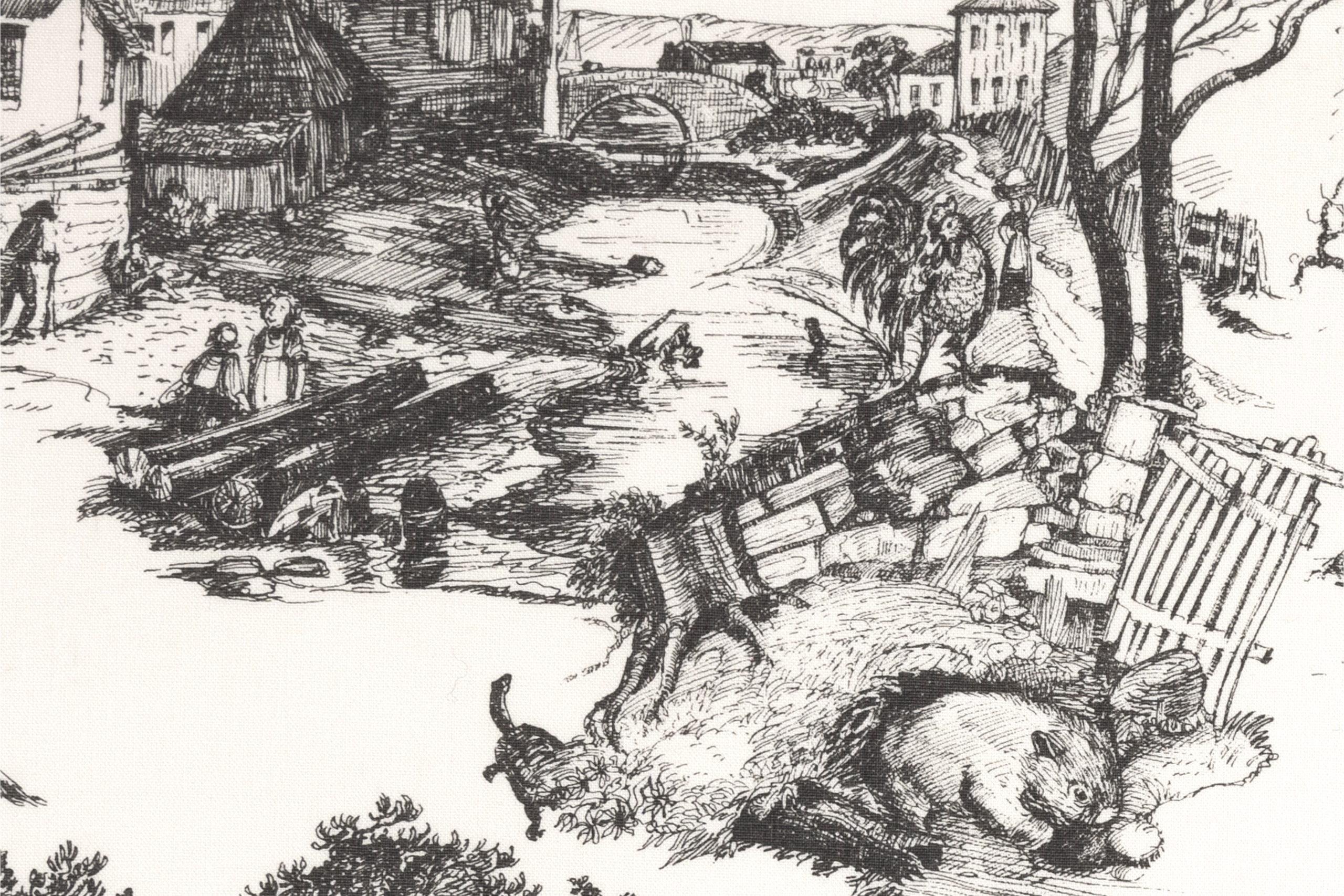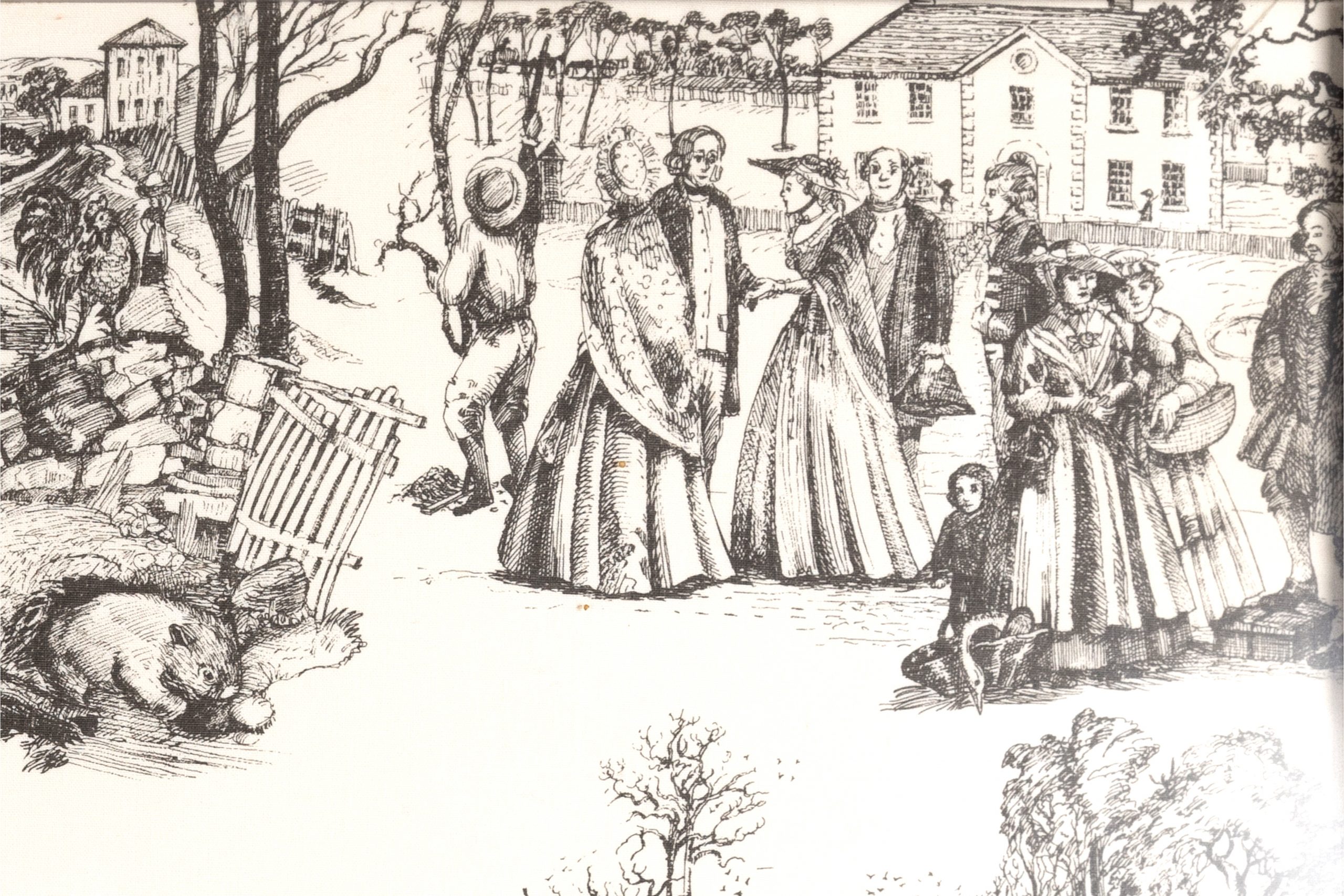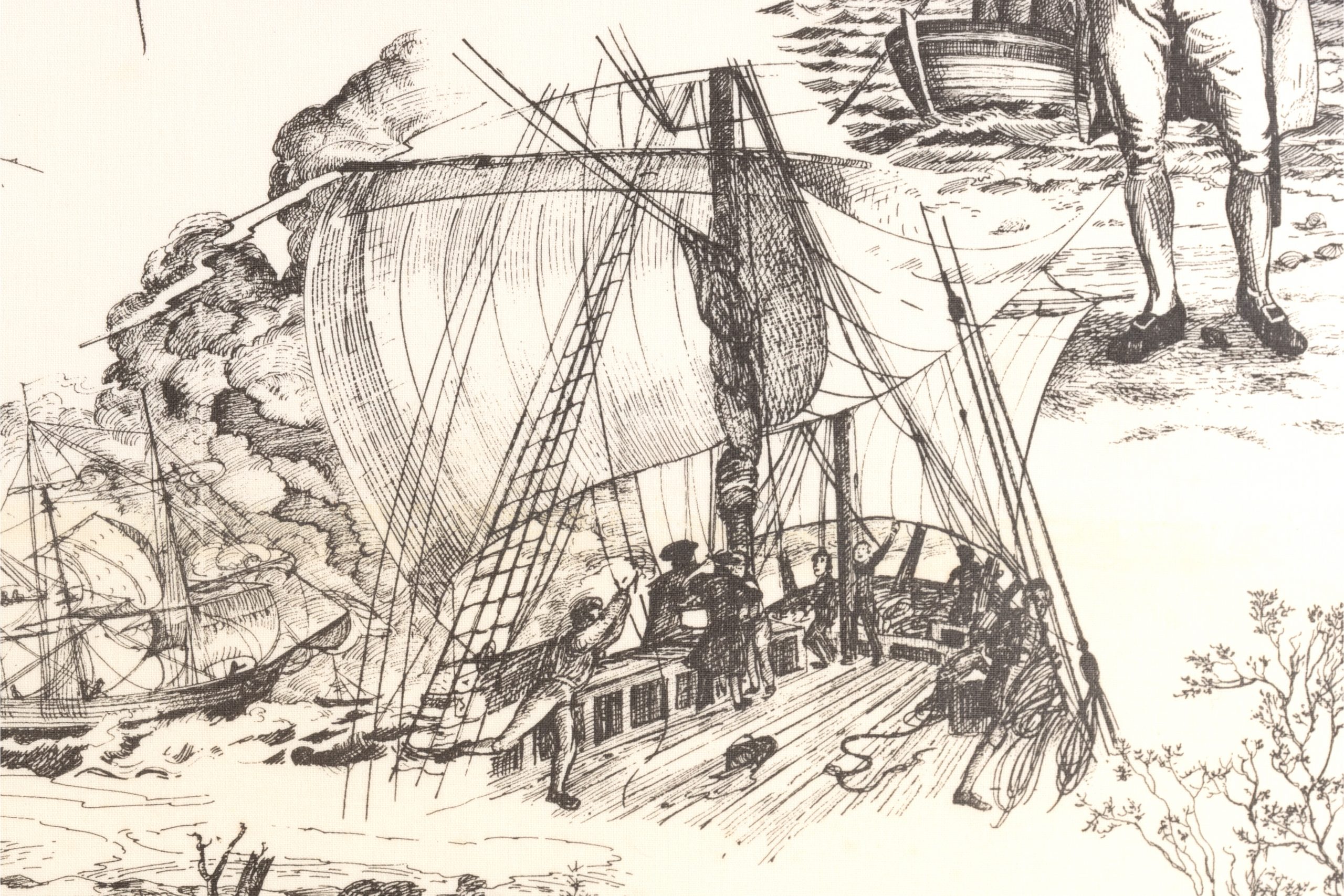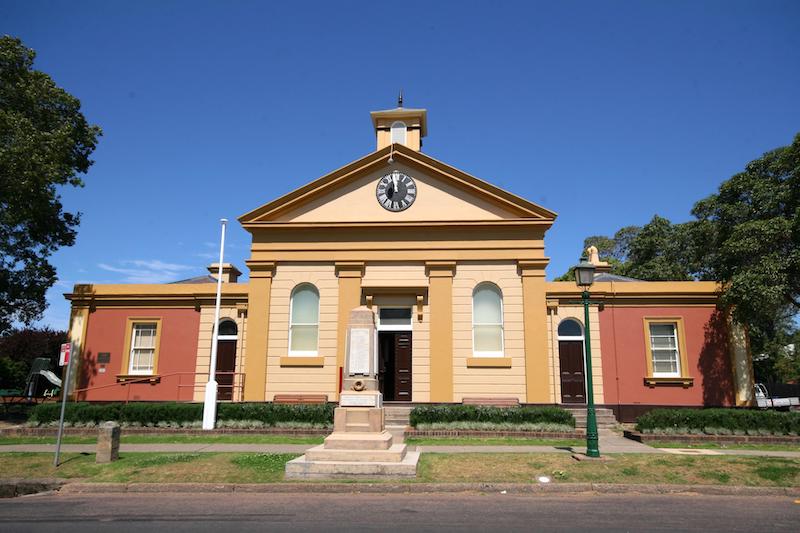Trophy Textile
Making History at National Textiles, Rutherford
As hundreds of industrial looms clanged and hummed at the National Textiles manufacturing plant at Rutherford, NSW, this small, printed remnant of ‘toile’ furnishing fabric hung silently on the wall in the administration office. It was a ‘trophy’ of a high-quality furnishing textile the staff had woven in 1988 in celebration of the Australian Bicentenary, but it did not get the chance to hang there very long.
Inspired by the traditional French fabric toile de jouy, this printed cloth is a visual expression of historical accounts of the British landing and settlement at Sydney Cove in 1788. Referencing colonial-era artworks, the engraver Pamela Griffith produced a repeating design depicting Aboriginal people, colonial figures and buildings, ships, and indigenous flora and fauna. As understandings and perceptions of that historical period have since shifted, however – would a 1788 commemorative fabric designed today look different?
Commissioned by Ascraft Fabrics and printed in four colour ways by Tennyson Textiles, the cotton was grown and spun in Queensland and woven by the staff at National Textiles. Some of them had worked at the Rutherford mill for decades since its opening as Burlington Mills in 1945.
From 1983, as National Textiles, the factory became the largest employer in the lower Hunter Region and an important driver of the local economy. But during the 1980s-90s the company struggled due to the lowering of tariffs and loss of contracts.
This prized piece of toile hung on the wall for just twelve years, until the factory closed in 2000, the company going into receivership, famously leaving 350 workers without jobs and owing eleven million dollars in unpaid entitlements.


